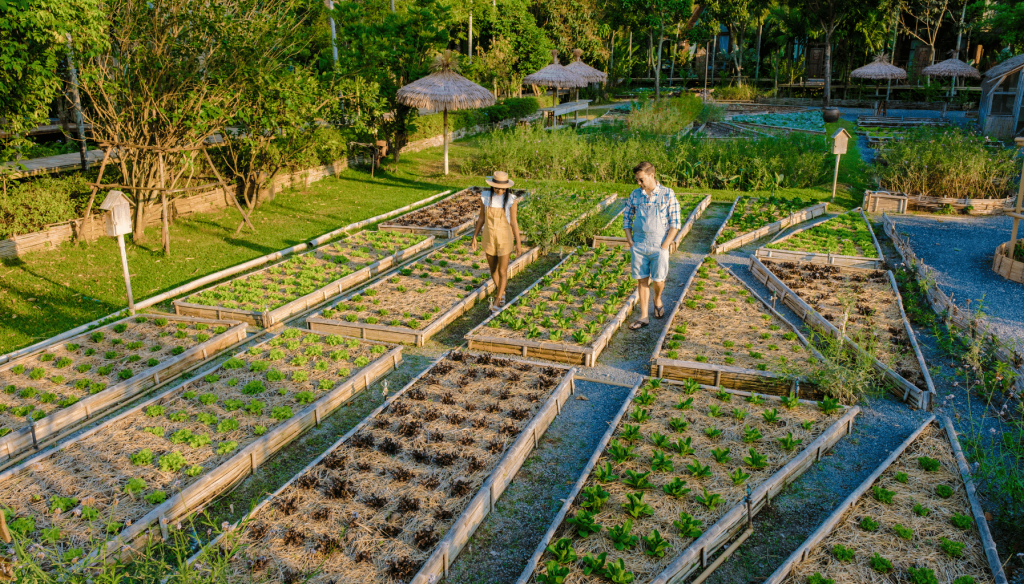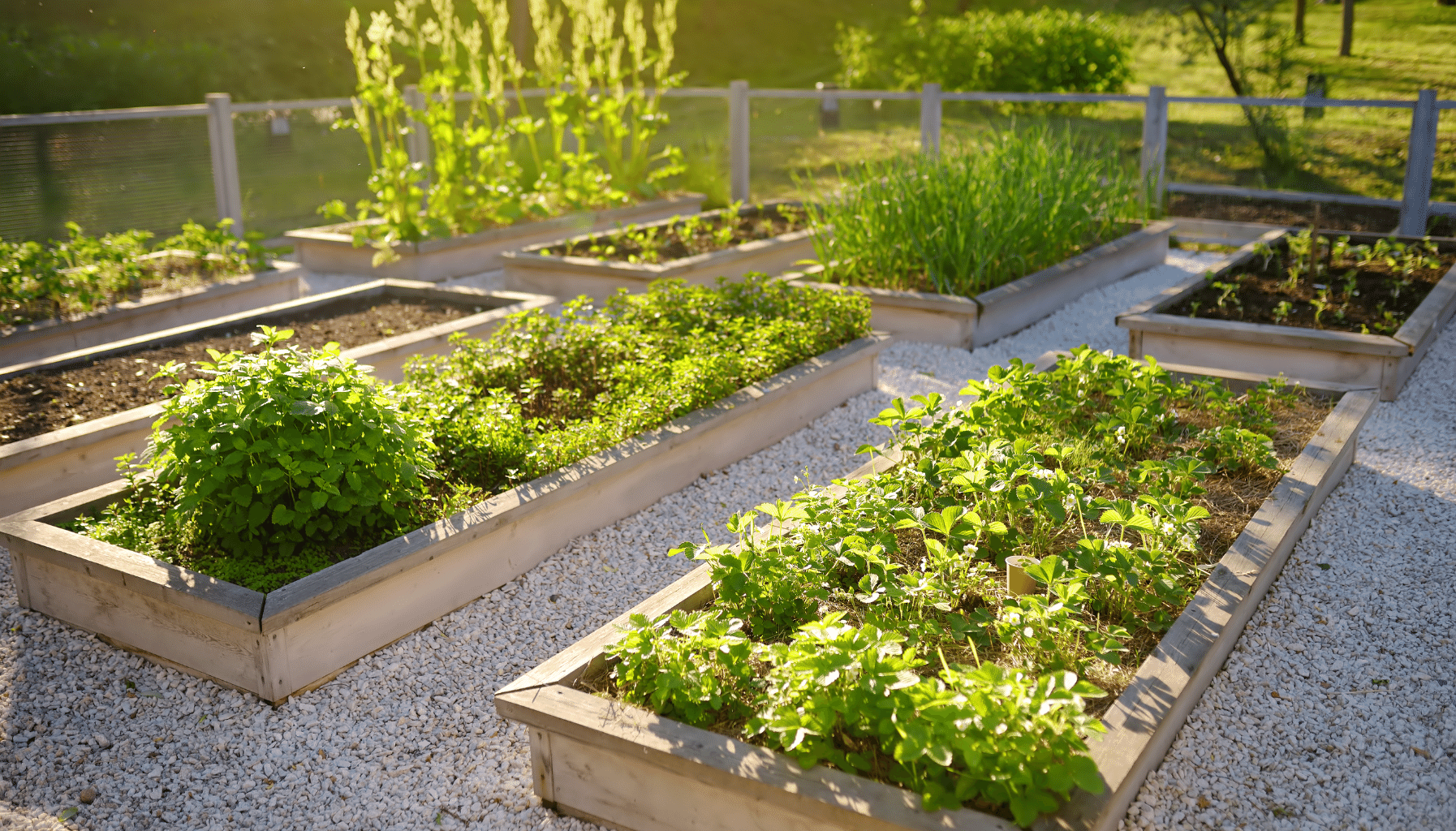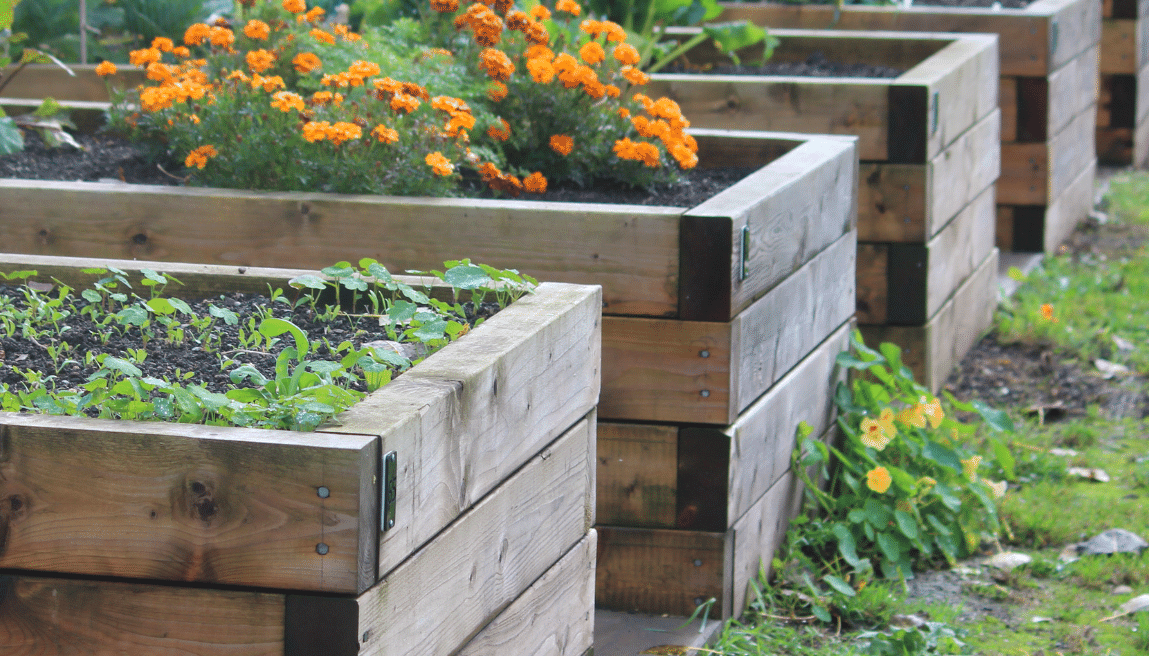
Gardening enthusiasts can achieve many advantages through sustainable layouts for their elevated plant beds. These eco-friendly techniques enhance the environment and help gardeners maximize their garden’s potential.
Embracing organic materials and water conservation strategies can elevate soil quality, bolster plant well-being, and more efficiently manage pests and weeds.
Individuals can optimize their available space by employing raised garden beds, boosting plant growth and yield, and crafting a visually appealing and eco-conscious garden space.
Thoughtful planning and strategic design of raised bed gardens are essential for ensuring lasting success and reaping the most benefits.
Benefits Of Incorporating Raised Beds In Your Garden
Enhance your gardening experience with the various advantages offered by raised beds. They create a controlled environment for optimal plant growth and soil quality.
Raised beds are renowned for enhancing garden soil quality and providing a conducive environment for healthy plant growth.
These elevated structures can significantly improve the yields in your vegetable garden while promoting better drainage to prevent waterlogging and enhance root health.
One notable advantage of incorporating raised beds in your garden is effectively managing weeds, as the raised structure acts as a barrier against weed encroachment.
This can save you valuable time and effort in maintaining a weed-free garden and allow you to focus on nurturing your plants.
Raised beds can be customized with trellises to support vertical gardening, making growing climbing plants such as tomatoes and cucumbers easier. This innovative design feature adds a practical and aesthetically pleasing element to the vegetable garden.

Enhancing Garden Soil With Raised Bed Structures
Gardeners seeking to enhance their garden’s fertility and productivity can explore the advantages of raised bed structures. By incorporating raised garden plots into their landscape design, individuals can experience improved soil quality through better drainage, enhanced aeration, and increased organic matter content.
This innovative gardening approach allows for better control over soil composition, promoting healthier plant growth and abundant harvests.
Whether cultivating a raised bed vegetable garden or establishing a charming kitchen garden, the benefits of using raised beds are undeniable.
With careful planning and regular maintenance, raised beds have the potential to elevate any outdoor space into a flourishing and sustainable oasis.
Benefits of Raised Garden Beds
- Improved soil quality through better drainage
- Enhanced aeration for healthier plant growth
- Increased organic matter content for abundant harvests
- Better control over soil composition for sustainable gardening
Maximizing Space With Raised Garden Bed Layouts
When it comes to maximizing garden space, raised garden beds offer a practical solution for garden design. One of the first raised garden bed options to consider is constructing raised beds made from wood.
These wooden raised beds provide a sturdy, easily customized structure to fit your garden layout.
The benefits of raised garden beds include efficient use of space and the ability to create an organic garden.
Raised beds allow for better soil drainage and prevent soil compaction at the bottom of the bed. If you want to simplify creating raised beds in your garden, consider using a bed kit.
Utilizing Raised Beds For Better Drainage In Your Garden
Elevating your plants in raised beds can bring numerous benefits to your gardening experience. By creating a higher planting area, you can enhance water drainage efficiency in your garden.
Excess water can flow more effectively, preventing issues such as waterlogged soil and root rot.
This method is particularly advantageous for heavy rainfall or poor soil drainage.
Raised beds also provide improved aeration and root access to oxygen, encouraging healthier plant growth. Selecting well-draining bed materials like gravel or sandy soil is essential to optimize the drainage in your raised beds.
Integrating an irrigation system with proper drainage outlets can further enhance water flow. Following these simple steps, you can establish a thriving garden with ideal drainage conditions.
Benefits of Raised Beds in Gardening
- Enhances water drainage efficiency in the garden
- Prevents waterlogged soil and root rot
- Improves aeration and root access to oxygen for healthier plant growth
- Optimizes drainage by selecting well-draining bed materials and integrating proper irrigation systems
Adding Trellises To Your Raised Bed Garden For Vertical Growth
Enhancing your garden area with vertical gardening in a raised bed frame can bring numerous advantages to your gardening experience. Raised beds offer a variety of benefits, including improved drainage, easier weed control, and enhanced soil quality.
When constructing the garden area, it is essential to choose durable materials for the raised beds that will last a long time.
Incorporating drip irrigation can effectively water your plants while reducing water wastage.
By incorporating trellises into your raised bed gardening setup, you can optimize space and cultivate fruits and vegetables vertically, adding a touch of beauty while maximizing plant growth.
Implementing Drip Irrigation Systems In Raised Garden Beds
Implementing drip irrigation systems in raised garden beds can revolutionize how you water your plants. These innovative systems deliver water directly to the root zone, reducing waste and promoting healthier plant growth.
Understanding the significance of proper watering is crucial for successful gardening, as inconsistent watering can hinder plant development and decrease yields.
Properly preparing the raised bed is key when setting up a drip irrigation system.
Essential steps in the process are selecting the appropriate system, carefully laying out the irrigation lines, connecting to a water source, and testing functionality. Regular maintenance is necessary to ensure the system operates efficiently, benefiting both plants and the environment.
Benefits of Drip Irrigation Systems in Raised Garden Beds
- Drip irrigation systems deliver water directly to the root zone, reducing waste and promoting healthier plant growth.
- Proper watering is crucial for successful gardening, as inconsistent watering can hinder plant development and decrease yields.
- Setting up a drip irrigation system requires proper preparation of the raised bed, selecting the appropriate system, carefully laying out the irrigation lines, connecting to a water source, and testing functionality.
- Regular drip irrigation system maintenance is necessary to ensure efficient operation, benefiting both plants and the environment.
Growing Root Crops Successfully In Raised Bed Vegetable Gardens
When establishing a site for the raised bed, various factors like soil quality, sunlight exposure, and proximity to a water source must be considered. Carefully planning the bed’s location and preparation is the key to successfully growing root crops in raised bed vegetable gardens.
Raised beds offer numerous advantages, such as improved drainage, warmer soil temperatures, and better control over soil composition.
When starting a new bed for root crops, ensure it is deep enough to accommodate the growth of vegetables like carrots, radishes, beets, and turnips.
Begin by filling the wooden beds with a proper soil mix, incorporating recycled materials for sustainability whenever possible. Installing a weed barrier will help prevent unwanted intruders and maintain a healthy environment for your crops. Along with proper spacing and protection from pests, attending to the needs of your vegetable garden is crucial for a successful harvest.
Consider using recycled materials to build the site for the raised bed, ensuring enough to accommodate the new bed, following a vegetable gardening guide for optimal growth.
Beautifying Your Garden With Raised Bed Designs
Elevate the beauty of your outdoor space with sustainable raised bed designs that enhance aesthetics, promote plant growth, and provide environmental benefits. Integrating various building materials into your garden plan can offer endless possibilities for creating a vibrant, eco-friendly oasis.
Whether considering a new raised bed or looking to incorporate one into your existing garden layout, exploring creative designs and materials can transform your entire garden into a stylish and functional retreat.
Discover how a bed without boundaries can redefine your gardening experience and bring a fresh perspective to your outdoor sanctuary.
Eco Friendly Raised Garden Bed Layouts Inspiration
Crafting Genius 3 Creative Raised Herb Garden Planter Ideas



